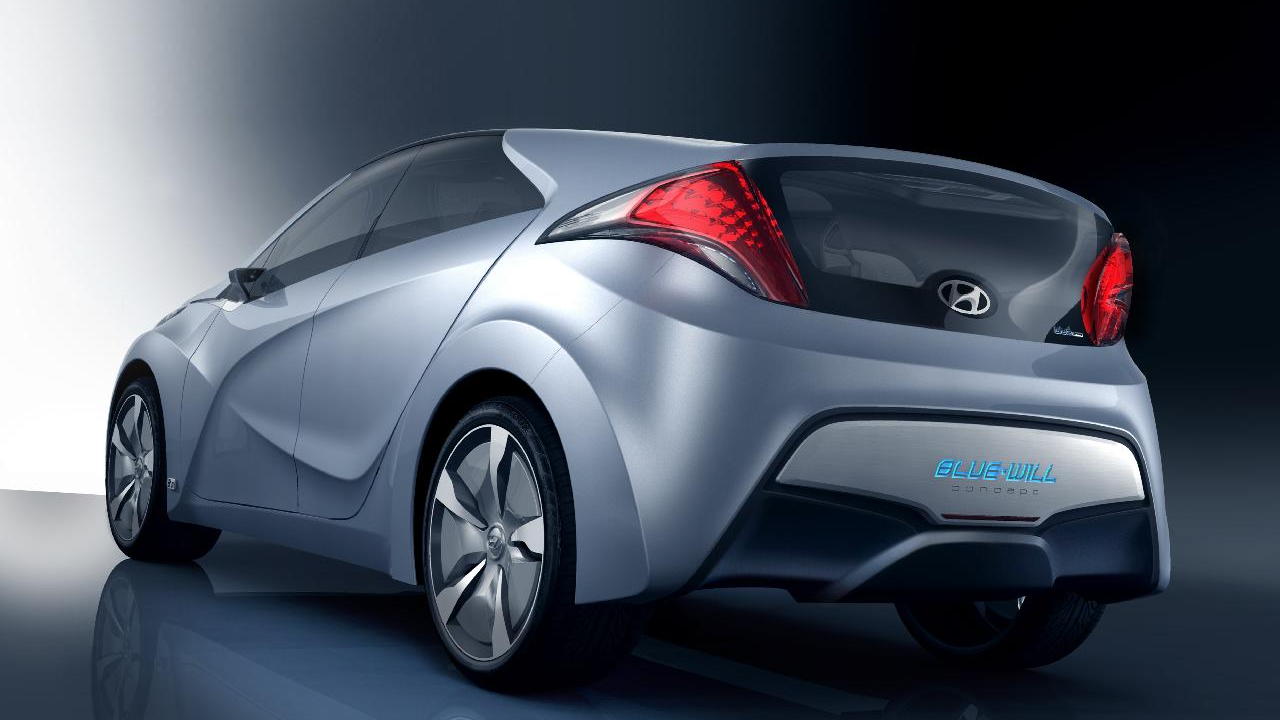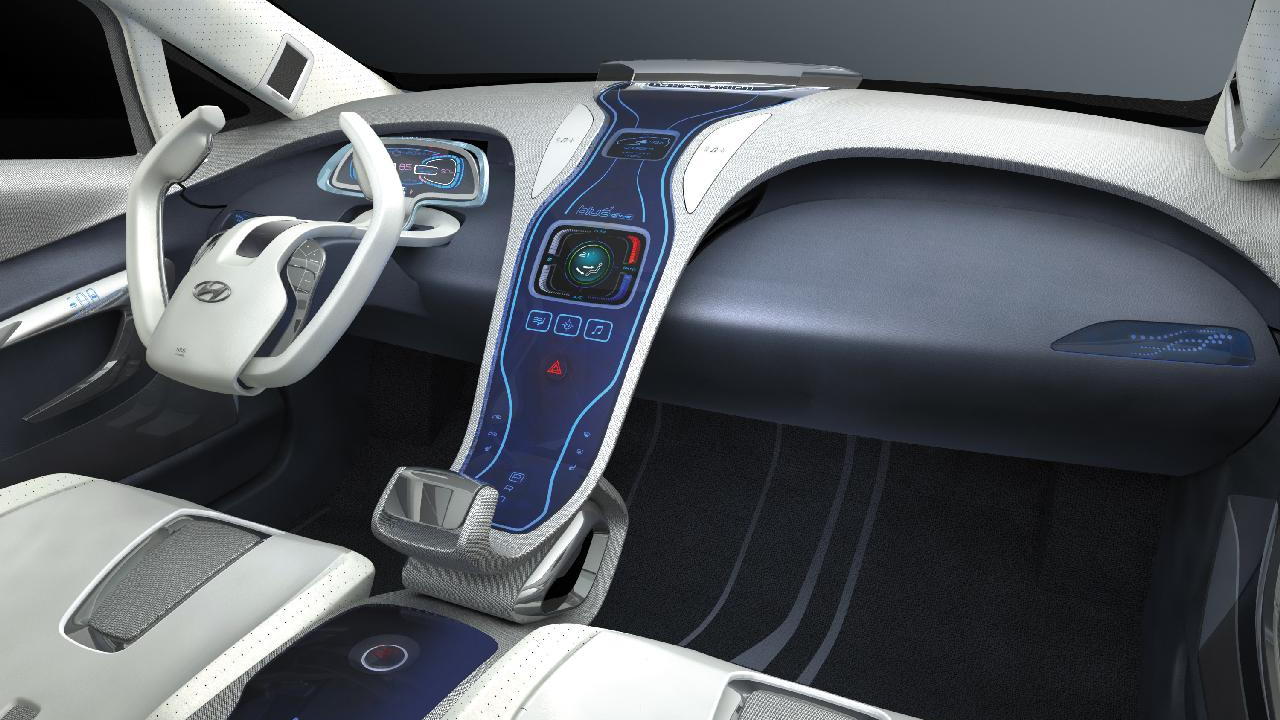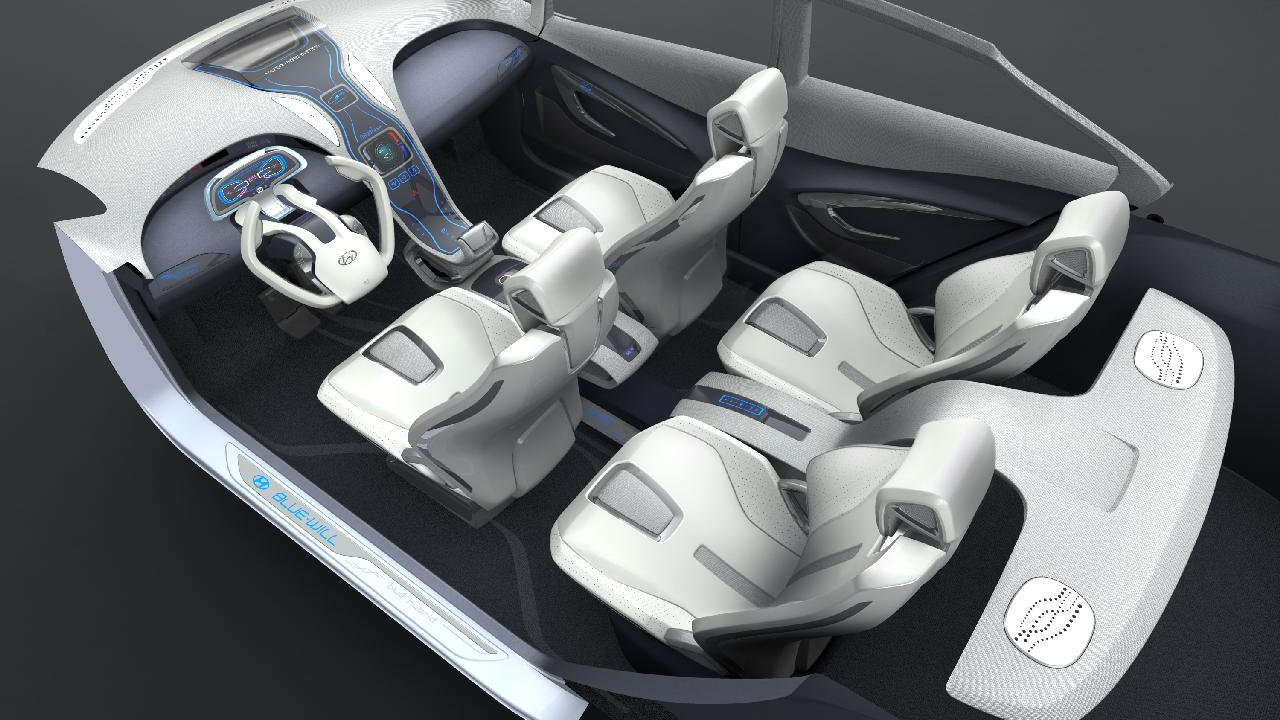The hybrid wars look like they're heating up, with aggressive challenger Hyundai planning a dedicated hybrid that takes direct aim at the iconic Toyota Prius.
The company is "studying" a unique hybrid vehicle, one that shares no body panels with an existing model, according to Miles Johnson, Hyundai product public relations manager. It could launch in late 2012.

2011 Hyundai Sonata Hybrid at 2010 New York Auto Show at CEO John Krafcik

2011 Hyundai Sonata Hybrid at 2010 New York Auto Show

2011 Hyundai Sonata Hybrid

2011 Hyundai Sonata Hybrid teaser
The well-received 2011 Hyundai Sonata Hybrid recently unveiled at the New York Auto Show is just the first of several hybrids the company is planning to launch, taking advantage of lithium-ion batteries developed with its partner LG Chem.
Blue-Will but less so
It would likely be a toned-down version of the company's Blue-Will plug-in hybrid concept car, first shown a year ago at the Seoul Motor Show and revealed in the U.S. at January's Detroit Auto Show. That concept pioneers what Hyundai calls "fluidic sculpture design."
Like the Toyota Prius, the Blue-Will concept is a compact-to-midsize five-door hatchback designed for maximum aerodynamic efficiency.
Plug-in later, maybe
While the powertrain shown in the Blue-Will concept can be recharged by plugging into wall power, Hyundai's first dedicated hybrid vehicle may not initially plug in--leaving that for a later model, just as Toyota is doing with its 2012 Prius Plug-In Hybrid variant.
Hyundai has aggressive plans for its hybrid program, which jumps directly to using more energy-dense lithium-ion cells, rather than the older nickel-metal-hydride chemistry used in all but a handful of hybrids over the past decade.
Sonata Hybrid powertrain?
The Prius-fighting Hyundai might well use the same powertrain as the 2011 Sonata Hybrid. That vehicle is powered by a 169-horsepower, 2.4-liter gasoline engine akin to the one used for the standard Hyundai Sonata, though adapted for hybrid use.
The engine is paired with a 30-kilowatt (40-horsepower) electric motor, followed by a version of the company's six-speed automatic transmission. To adapt it for hybrid use, an oil pump replaces the standard torque converter.
Between the engine and the motor, the hybrid powertrain produces a combined 209 horsepower and 195 foot-pounds of torque. Hyundai also includes a small 8.5-kilowatt Hybrid Starter Generator (HSG) to restart the engine after it is switched off. It can also provide a small amount of battery charging in severe conditions.
Lighter lithium cells
It drives differently from Toyota and Ford systems, maintaining familiar transmission shifting rather than acting as an electronic continuously-variable transmission (eCVT). Among other benefits, says Hyundai, is higher-speed all-electric running.
The Sonata Hybrid's 1.6-kilowatt-hour lithium-ion battery pack weighs just 96 pounds, against 124 pounds for the nickel-metal-hydride pack in the Toyota Prius, which has almost identical energy capacity.
Wide-open-mouth styling
Unusually for a hybrid variant of an existing model, the 2011 Hyundai Sonata Hybrid sports entirely new front sheetmetal, making it visually distinctive.
The Sonata Hybrid's front end shares the wide-open-mouth look seen on the Blue-Will, perhaps suggesting a coherent styling theme for Hyundai's hybrid lineup.
Last July, its domestic-market Elantra LPI Hybrid sedan became the world's first production vehicle to use lithium-polymer cells.


















